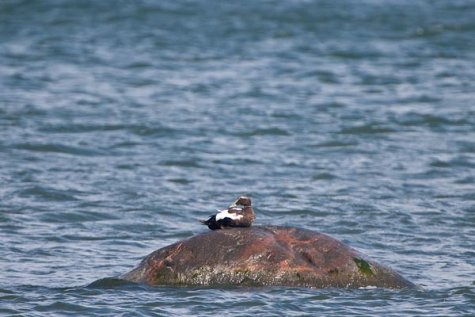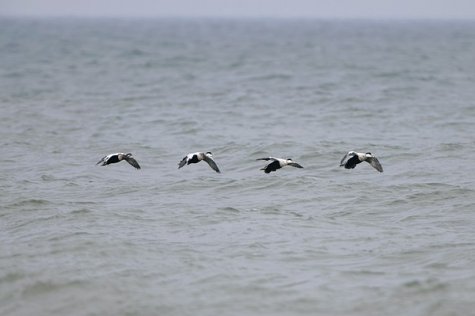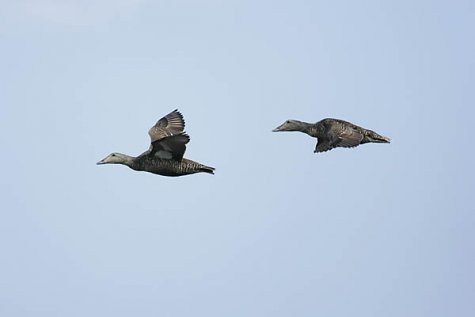The autumn of the heraldic bird of Vilsandi
Photos: Arne Ader
Translation: SilverT
Common eider
Common eider Hahk Somateria mollissima
Eiders are quite common breeders on our islands and islets, there were probably more than five thousand pairs nesting in this year, however, the numbers have decreased quite significantly over the last decades. Passing migrants travel during daytime; there are about twenty five thousand of them and the migration continues even in November. Only a few will spend the winter here and others migrate to Denmark or by the Northern Sea.
Eiders can be observed on the northern and north-western coast of the mainland and of course at Sõrve säär in Saaremaa. The largest of ducks can measure up to a small goose: they weigh about 1,5-2 kg-s, are over sixty centimeters in length and have a wingspan of one meter. Diving ducks mostly feed on the common mussel.
Eiders have large and wedge-shaped heads, relatively thick necks. After moulting in the summer, old male birds appear as blackish brown with white spots; a large white spot can be seen on the wing when they fly. The front of young birds`is a bit lighter than adult birds`and they do not have the white spot on the wing.
Female birds have a black and brown plumage and they don`t have the white spot on the wing either. All of them have a greenish bill and brown iris.
In winter, one might occasionally come across a Steller`s eider on the open waters or a very small number of passing king eiders in the autumn.
Common eider observations in e-Biodiversity database:
Common eiders
Common eiders











